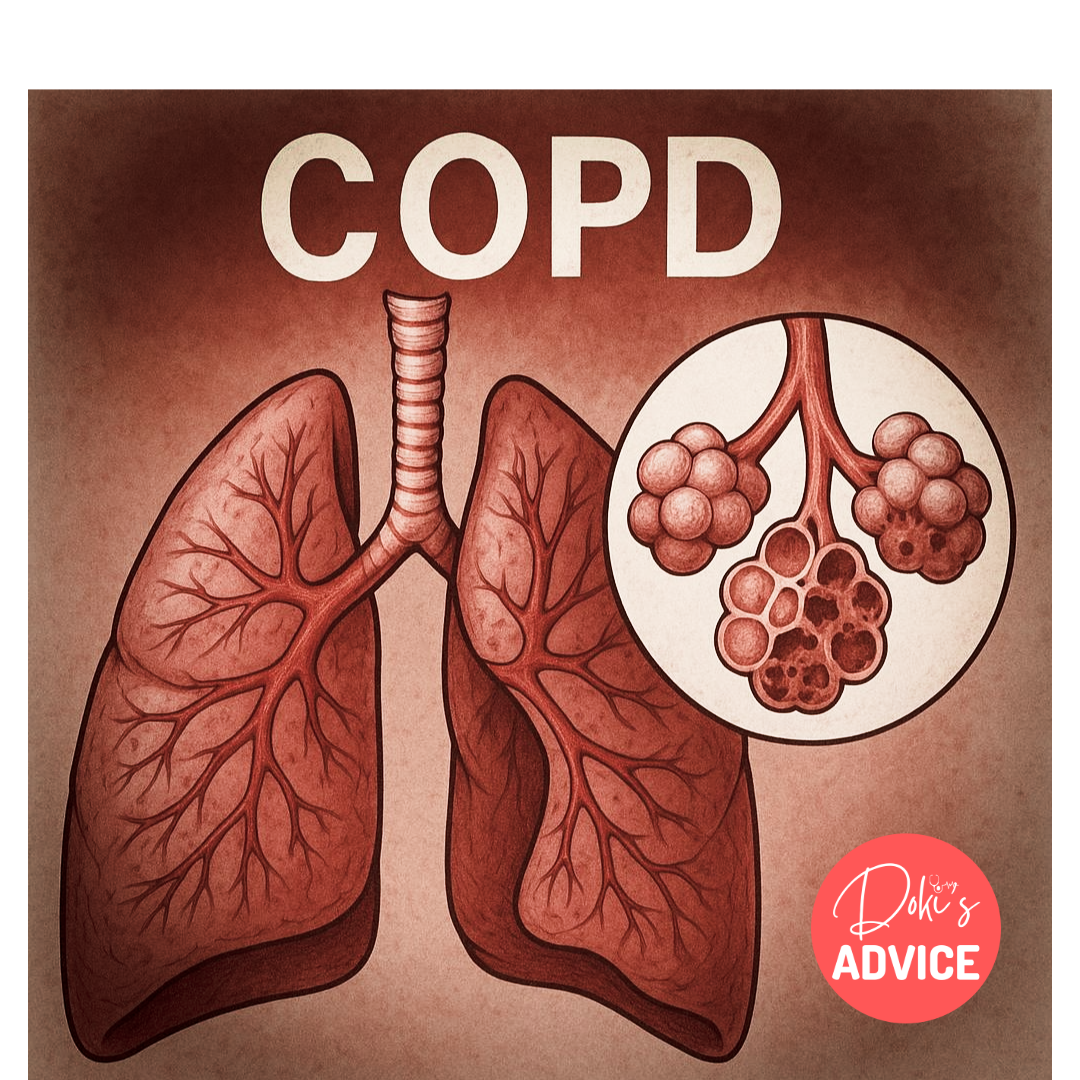Chronic Obstructive Pulmonary Disease (COPD): An Overview

Definition
Chronic Obstructive Pulmonary Disease (COPD) is a progressive lung disease that makes it hard to breathe properly. It is mainly caused by long-term exposure to harmful substances like cigarette smoke, air pollution, or workplace chemicals. Over time, COPD leads to permanent narrowing and inflammation of the airways, making it difficult for air to flow in and out of the lungs.
Most people with COPD first develop chronic bronchitis. If left untreated, COPD can worsen and lead to lung damage, including emphysema—a condition where the air sacs in the lungs are destroyed, making breathing even harder.
Epidemiology
Global Perspective
COPD is a major global health concern. In 2021, it was the fourth leading cause of death worldwide, responsible for approximately 3.5 million deaths, accounting for about 5% of all global deaths. COPD varies across studies, with estimates ranging from 10.3% to 13.1% globally. Notably, nearly 90% of COPD deaths in individuals under 70 years of age occur in low- and middle-income countries (Source: WHO, PMC and Amboss, PMC)
COPD in Kenya
In Kenya, the burden of COPD is significant. A study reported that approximately 23% of adult outpatients in Kenya met the spirometric definition of COPD, with 60% of these cases showing no or insignificant bronchodilator reversibility, and 31% classified as severe or very severe. This highlights the substantial impact of COPD on the Kenyan population and underscores the need for targeted public health interventions. (Source: WHO, Amboss and PMC)
Signs and Symptoms
COPD develops gradually, and individuals may not notice symptoms until significant lung damage has occurred. Common signs and symptoms include:
- Shortness of breath (dyspnea): Especially during physical activities.
- Chronic cough: Often producing mucus (sputum) that may be clear, white, yellow, or greenish.
- Mucus production especially in the morning
- Wheezing: A whistling or squeaky sound during breathing.
- Chest tightness: A feeling of pressure or heaviness in the chest.
- Frequent respiratory infections: Such as colds or the flu.
- Fatigue: Due to the increased effort required to breathe.
- Unintended weight loss: In later stages of the disease.
Other signs and symptoms could be:
Blue lips and fingernails (cyanosis) due to low oxygen levels in the blood.
Swelling in the legs (ankle oedema) – A sign that the heart is struggling due to lung disease for instance high pressure in the lung blood vessels.
Bulging neck veins – Indicates increased pressure in the lungs and heart strain.
Clubbed fingers and rounded nails (drumstick fingers & watch-glass nails) – Can occur in long-term COPD and may also suggest lung cancer.
Barrel-shaped chest – Happens in advanced COPD when the lungs become permanently overinflated.
As COPD progresses, symptoms typically become more severe, and individuals may experience exacerbations—episodes of acute symptom worsening.
Diagnosis
Diagnosing COPD involves a combination of clinical evaluation and diagnostic tests:
- Medical history and physical examinations:
Medical Doctors will ask about:
- Symptoms – When they occur (day/night), the amount and appearance of mucus, weight loss, fever, or night sweats.
- Smoking history – How long, how much, and whether the person has tried to quit.
- Passive smoking – Exposure to secondhand smoke.
- Allergies or asthma – Any past history of allergic reactions or asthma-like symptoms.
- Frequent lung infections – Recurring colds or sinus infections.
- Daily activities – Any avoidance of physical tasks due to breathlessness.
- Sleep quality – Any sleep disturbances or excessive daytime sleepiness.
- Job exposure – Working with dust, fumes, or gases (e.g., mining, metal industry).
Physical Examination:
Observation:
🔹 Use of extra muscles to help breathe.
🔹 Cyanosis (bluish skin due to low oxygen).
🔹 Weight loss (cachexia) in severe COPD.
🔹 Barrel chest (sign of advanced emphysema).
🔹 Swelling in legs (signs of heart failure).
Tapping the chest (Percussion):
🔹 Loud, hollow sounds – Due to overinflated lungs in emphysema.
🔹 Diaphragm sits lower than normal and moves less – A sign of lung damage.
Listening to the lungs with a stethoscope:
🔹 Prolonged exhalation – Air gets trapped in the lungs.
🔹 Wheezing and rumbling sounds – Due to airway narrowing.
🔹 Weak or silent breathing sounds – Advanced airway obstruction.
🔹 Crackling noises – Could indicate an infection.
- Spirometry: A key diagnostic test measuring lung function by assessing the volume and speed of air a person can inhale and exhale. A post-bronchodilator FEV₁/FVC ratio of less than 0.70 confirms persistent airflow limitation.
- Imaging Tests: Chest X-rays or computed tomography (CT) scans can reveal emphysema and rule out other lung problems.
- Arterial Blood Gas Analysis: Measures oxygen and carbon dioxide levels in the blood, indicating how well the lungs are functioning.
Treatment
While COPD is a progressive disease with no known cure, various treatments can help manage symptoms and improve quality of life:
- Smoking Cessation: The most crucial step in preventing COPD progression.
- Medications:
- Bronchodilators: Relax the muscles around the airways, making breathing easier. They can be short-acting or long-acting.
- Inhaled Corticosteroids: Reduce airway inflammation and may be used in combination with bronchodilators.
- Phosphodiesterase-4 Inhibitors: Decrease airway inflammation and relax the airways.
- Oxygen Therapy: For individuals with severe COPD and low oxygen levels, supplemental oxygen can improve quality of life and prolong survival.
- Pulmonary Rehabilitation: A program that combines exercise training, nutritional advice, and education to help individuals manage their condition.
- Vaccinations: Regular vaccinations against influenza and pneumococcal pneumonia to prevent infections that can exacerbate COPD.
- Surgical Options: In select cases, procedures like lung volume reduction surgery or lung transplantation may be considered.
Early diagnosis and appropriate management are essential to control symptoms, reduce the frequency and severity of exacerbations, and improve overall health status in individuals with COPD.

